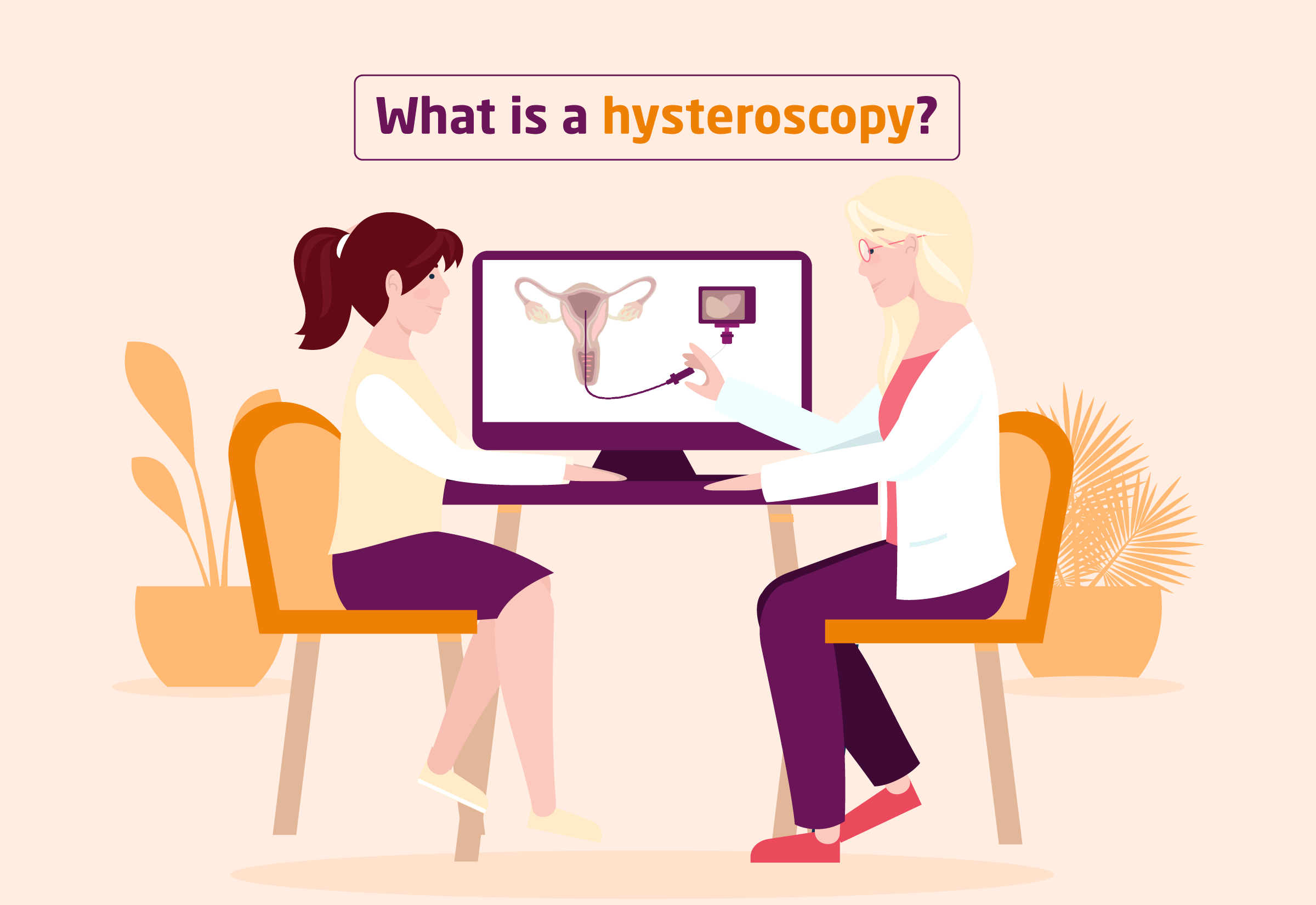What is a hysteroscopy?
Hysteroscopy can be used in both treatment and diagnostic processes. During the surgery, your surgeon will use a narrow, illuminated tube called a hysteroscope to see inside your uterus and at your cervix through your vagina.
What is diagnostic and operative hysteroscopy?
A diagnostic hysteroscopy reveals structural issues in your uterus. Also, hysteroscopy can validate the outcomes of other exams like an ultrasound or hysterosalpingography (HSG). HSG is an X-ray dye test used to determine whether your fallopian tubes are blocked. However, any submucosal fibroid, polyp, adhesions etc. may also be detected by HSG.
An anomaly found during a diagnostic hysteroscopy can be treated with an operational hysteroscopy in the same setting simultaneously. Your surgeon uses a tool during operational hysteroscopy to remove anomalies.
What is the purpose of a hysteroscopy?
The purpose of a hysteroscopy includes:
- For visual verification of the outcome of another test.
- To investigate the reason for pelvic pain or an unusually heavy period.
- To assist in the excision of polyps, adhesions and fibroids.
- To assist in the removal of a uterine device (IUD).
- Along with laparoscopic procedure.
- To identify any uterine malformations.
Who can go for a hysteroscopy?
In order to decide whether a hysteroscopy is necessary, your doctor will examine your medical history and assess your present state of health. Hysteroscopy has a lot of advantages, but not everyone is a good candidate. For instance, you shouldn’t get a hysteroscopy if you’re pregnant or you have a pelvic infection.
What is the procedure for hysteroscopy?
During the operation, you will be positioned similarly to how you would ordinarily be for a gynaecological exam, with your feet in the stirrups at the end of the exam table. It could take anywhere from 5 to 30 minutes depending on why it is being done, it could take anywhere from 5 to 30 minutes. The procedure for hysteroscopy includes:
- The speculum will first be inserted into the vagina by the doctor. This is similar to what takes place during a gynaecological examination.
- The hysteroscopy instrument will subsequently be inserted by the doctor through the cervix. They will keep advancing it into the uterus after passing it through the cervix.
- After that, the device will gently inject a liquid into your uterus to clear the surface and assist in gradually widening it.
- The doctor can see the uterus and the opening of fallopian tubes thanks to the light and camera on the hysteroscope’s end. This enables them to make any necessary diagnoses or surgical operations.
The surgical tools will also be inserted through the hysteroscope tube to carry out the surgery if the procedure is being utilised for surgery.
What happens before a hysteroscopy?
Your doctor will check to see if you’re a suitable candidate for a hysteroscopy, go over the process with you, and address any concerns you might have. You’ll get instructions to help you get ready for the treatment.
- Your doctor will ask what medications you are taking, including vitamins and supplements, and take a medical history. You might need to stop taking aspirin and other anticoagulants, such as blood thinners, before the surgery.
- The doctor might conduct a physical examination, pelvic examination, and pregnancy test. Depending on the particulars of your procedure, you could be required to undergo a blood test or other diagnostic procedures.
How long does it take to recover from hysteroscopy?
Your recovery period will vary on how involved your procedure was, such as whether your hysteroscopy involved both diagnostic and surgical procedures. Following a hysteroscopy, depending upon the extensiveness of the procedure, patients are frequently instructed to refrain from douching, sexual activity, and introducing anything into their vagina (such as tampons) for two weeks. During your recovery, you could be told to stay away from hot tubs, swimming, and baths.
What are the benefits of hysteroscopy?
With the help of a hysteroscopy, your surgeon may be able to identify the problem and fix it all at once. A hysteroscopy additionally offers precise, minimally invasive surgery. Your surgeon may be able to find abnormalities and remove them using hysteroscopy without causing damage to the tissue around them.
How painful is a hysteroscopy?
Everybody has a unique experience. According to studies, a patient’s perception of pain during hysteroscopy may depend on a number of variables, including the length of the process, whether or not the patient has given birth previously, and how worried they are before the procedure.
Discuss your worries with your doctor. Inquire as to how you should feel during your hysteroscopy. To ensure your comfort throughout the treatment, find out what kind of anaesthetic you will receive.
Is hysteroscopy major surgery?
Hysteroscopy surgery is regarded as minor surgery. Typically, it doesn’t necessitate an overnight hospital stay. A hysteroscopy can be carried out through your vagina, unlike more invasive procedures that open your abdomen to access organs.
Takeaway
Ask your doctor about the specifics of your hysteroscopy before it happens, such as how long it will take and how long your recovery period will be. Find out if other operations, such as laparoscopy, will take place concurrently. As you get ready for your hysteroscopy, knowing what to expect on the day of the procedure and in the weeks that follow can give you peace of mind.

